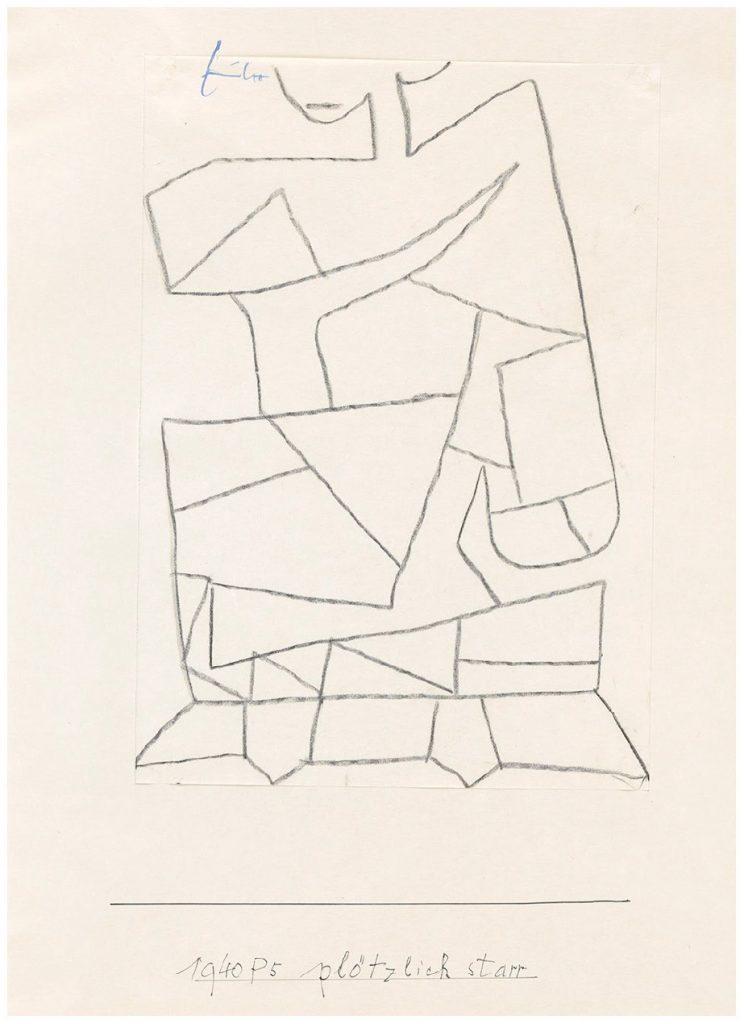(MENAFN- USA Art News) In the new documentary , narrator-director Kenneth August Meyer presents an interpretation of painter Paul Klee's work with an insight that few others would be able to offer, by viewing the Swiss-German artist's work through the lens of their shared degenerative illness.
Cutting from Meyer's various symptoms to corresponding works by Klee, the film weaves together Meyer's own story of learning about and coping with his condition, and an exploration of Klee's work through the lens of scleroderma. The film had its world premiere at SXSW film festival in Austin, Texas on March 13, where it won the grand jury award for documentary feature .
A deeply personal film with a whimsical, hopeful tone, recontextualizes Klee's work from his final years after he started experiencing symptoms in 1933 of what modern medical experts have now determined to be diffuse systemic scleroderma, a rare autoimmune disorder that involves the scarring of skin and internal organs. It's the same type of scleroderma Meyer was diagnosed with.
Drawing parallels between his own life and Klee's work, Meyer called the documentary“a scleroderma awareness piece disguised as an art film.”

Paul Klee, (1939). Photo: Sepia Times/Universal Images Group via Getty Images.
“Having the lens of this disease, at first I was feeling, 'who am I to be able to look at this work and comment the way that a curator of MoMA or LACMA would do?'” Meyer told Artnet News.“But I started realizing, well, no I can. I can totally look at this in a way that maybe other people can't see.”
Meyer, who is an art director at Portland advertising agency Wieden+Kennedy and a graduate of School of Visual Communication Design at Kent State, was guided by a number of books on Klee. He highlights Hans Suter's in particular, which is a full analysis of Klee's disease from a medical standpoint.
Meyer“imagined [himself] as an amateur art historian” and started noticing connections in Klee's artwork and theorizing beyond what Souter included in his book.“Some of them were without a doubt, and I've included those. But there are other ones where I started seeing things, or felt things, that just seem like I could understand in a deeper way,” Meyer said.
In the film, Meyer playfully compares his hands to cold blue popsicles, puffed up hot dogs, and hardened crab claw, explaining the impact scleroderma has on his skin and joints, while laying bare an aspect of his illness that makes him nervous, meeting new people and seeing their reaction to his hands. With Meyer's additional context, Klee's (1939) takes on new meaning.

Still from . Photo courtesy of the filmmakers.
As the film describes, in his later paintings, Klee's line work became bolder and thicker, his use of color more expressive, often in large, geometric blocks. Meyer also points out that when he was ill, Klee set aside more laborious, time-consuming techniques like stippling. Eventually, Klee was only able to paint while sitting. The artist became faster and less exacting in his drawings, departing from his earlier Cubist and Pointillist styles.
“I suspect that he did not have as much control as he did before. Or maybe he felt that he needed to say more things,” Meyer theorized.
Meyer believes Klee's illness had an impact on the volume of his output during those prolific final years, a theory discussed in the film when the director traveled to zentrum paul klee in Switzerland.“There was a need to express himself, to get out everything that he had to say,” Meyer said.“He knew that there was not much time.”
Meyer met with Klee's grandson, the late alexander klee , who was one of three ZPK staff listed as consultants on the film. Meyer says the folks at ZPK have seen the film and hope to keep it in their archives in perpetuity, which he calls“really humbling.”

Still from . Photo courtesy of the filmmakers.
Meyer's film is unique in its scope and perspective, but he is not the first to consider this aspect of Klee's later work. The tate modern staged an exhibit in 2013 that included the time period, and ZPK held a 2005 exhibit specifically on klee's disease . However, Meyer felt there needed to be an art piece aimed at a bigger audience that would consider Klee's later work in a new light. Initially, Meyer planned to stay behind the camera and follow others with scleroderma, still making comparisons between their life and Klee's work. In the early stages, he filmed a test piece on himself, which changed the film's direction.
“That test piece made me realize that I can let myself be really vulnerable. I could be self-deprecating. I can make fun of things that have changed in my life, and just do so in a way that maybe other people might not be as comfortable to just kind of spill it,” he said.

Paul Klee, , 1940. Photo courtesy of Zentrum Paul Klee, Bern.
The film focuses on some paintings and drawings in depth, while highlighting others as a sort of visual list to succinctly demonstrate parallels, cutting between Meyer and the artworks. Titles play a particularly important role, often elucidating the connection between Klee's illness and the individual works, Meyer's voiceover narration explaining practical realities of living with the rare disease.
Meyer asks if (1939) could be his own portrait as scleroderma alters the topography of his face, and wonders aloud over (1938), (1939), and (1940) about whether Klee had the same misgivings about his own facial restructuring, itching, burning, and hardening. It's hard not to agree, or at least understand his perspective.
“There's sort of this permission given by him,” Meyer added,“to look at his works and have a reaction to the title and then come back to the visual, and have your own sort of interpretation.”